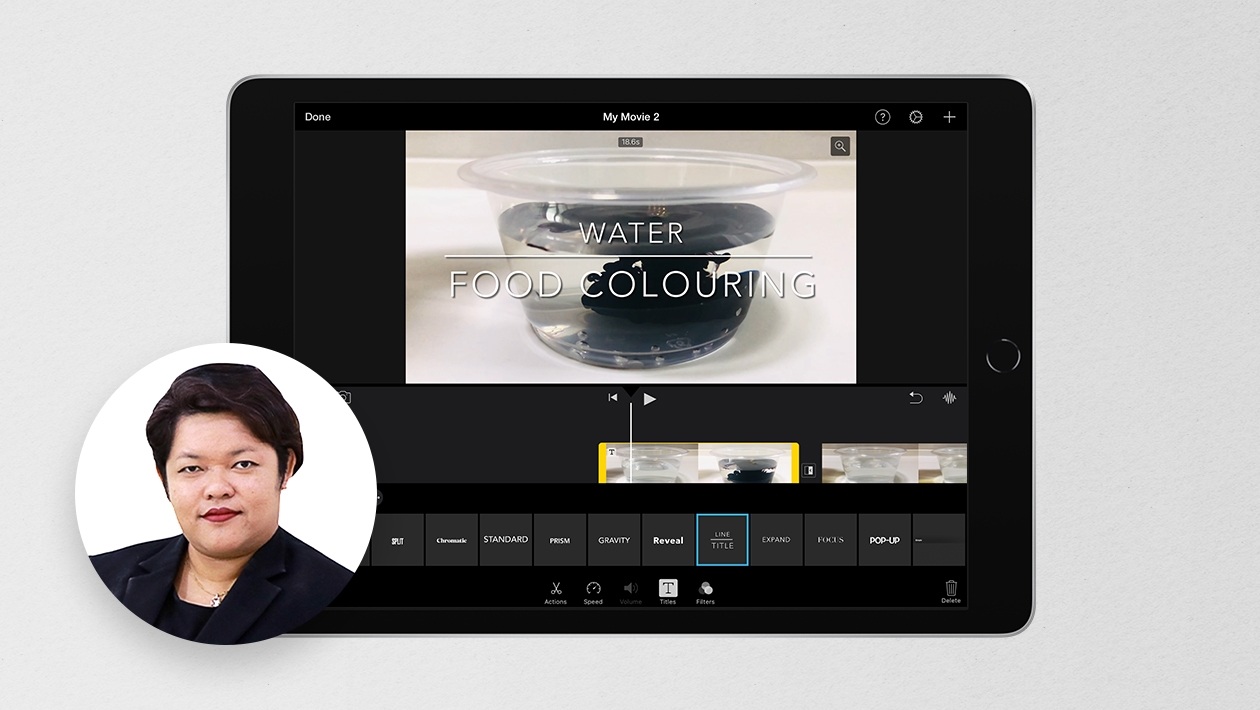Context
Students often struggle to visualise reaction processes, and may not have regular access to laboratories at school. In this lesson, students conduct safe experiments (e.g., vinegar + baking soda, effervescent tablets in water), and film them using slow-motion video to analyse physical observations and chemical changes.
Preparation & Flow
Duration: 50-60 minutes
Apps Used:
• Camera app (slow-mo mode)
• Clips or iMovie
Flow:
Hook + Introduction (10 mins)
(Teacher-led) Quick demonstration of a dramatic reaction, followed by class discussion. Teachers should clarify the difference between physical reactions and chemical reactions at this point to facilitate further learning when students perform their own experiments.
Experiment Time (20 mins)
In groups, students conduct one simple reaction. They film it in slow-mo and note observations.
Suggested reactions:
• Vinegar (Acetic Acid) + Baking Soda (Sodium Bicarbonate)
• Vinegar + Powdered Egg Shells (Calcium Carbonate)
• Vinegar + Whole Egg Shells [slower reaction speed]
• Effervescent tablets + Water
Video Explanation (20 mins)
In Clips or iMovie, students create a 30-60-second-long clip explaining:
• What happened
• What indicates a chemical change (e.g., gas produced, colour changes)
• Any other findings
Sharing + Wrap-up (10 mins)
As a class, watch student-produced videos and reinforce the concepts of physical reactions vs chemical changes.
Possible Extensions
• Compare different acids and bases, linking to concepts of concentration, basicity, and strength of acids.
• Use as a preamble to link to actual laboratory lessons, reinforcing theory lesson knowledge.
• Introduce the reactivity series using filmed reactions, comparing differences in reaction between different metals.
From the LearnGrowCreate Team
Main author: Sharon










Attach up to 5 files which will be available for other members to download.